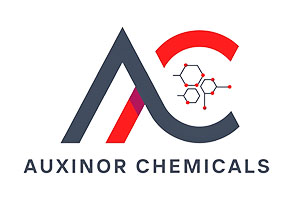Xylene
Xylene is a mixture of three aromatic hydrocarbon isomers: ortho-xylene, meta-xylene, and para-xylene. These isomers have similar chemical structures but differ in the placement of methyl groups on the benzene ring.
Applications Areas:
-
Chemical Composition: Xylene is a mixture of three aromatic hydrocarbon isomers: ortho-xylene, meta-xylene, and para-xylene. These isomers have similar chemical structures but differ in the placement of methyl groups on the benzene ring.
-
Solvent Properties: Xylene is primarily known for its excellent solvent properties. It is widely used as a solvent in various industrial processes, including paint and coating formulations, adhesives, printing inks, and rubber manufacturing.
-
Paints and Coatings: Xylene serves as a key component in paint and coating formulations due to its ability to dissolve resins and binders effectively. It helps achieve desired viscosity and improves the application properties of the coatings.
-
Adhesives and Sealants: In the adhesive industry, xylene is utilized as a solvent for formulating solvent-based adhesives and sealants. It helps in achieving proper adhesion and enhances the flow characteristics of the adhesive.
-
Printing Inks: Xylene finds extensive use in the production of printing inks, particularly in the manufacturing of flexographic and gravure inks. It aids in dissolving colorants and resins, ensuring uniform ink distribution and consistent print quality.
-
Rubber Industry: Xylene is employed in the rubber industry for various purposes, such as rubber compounding and vulcanization processes. It facilitates the dispersion of rubber additives and improves the processability of rubber compounds.
-
Cleaning Agent: Due to its strong solvent properties, xylene is used as a cleaning agent for equipment and machinery in industrial settings. It effectively removes contaminants, oils, and residues from surfaces.
-
Laboratory Applications: Xylene is utilized in laboratory settings as a solvent for various analytical techniques, such as histology and tissue processing in pathology labs. It aids in the deparaffinization and clearing of tissue samples.
-
Chemical Intermediate: Xylene serves as a precursor in the production of various chemicals, including terephthalic acid, which is used in the manufacture of polyethylene terephthalate (PET) resins for bottles and polyester fibers.
-
Fuel Additive: In some cases, xylene is added to gasoline as an octane booster and to improve combustion efficiency. However, this application is less common compared to its use as a solvent and chemical intermediate.
These points illustrate the versatile nature of xylene and its wide range of applications across different industries.
Specifications
| TESTS | REQUIREMENT | TEST METHOD | TYPICAL ANALYSIS |
|---|---|---|---|
| Appearance | Clear liquid | ASTM D 4176 | Clear liquid |
| Color,Pt/Co scale,max | 20 | ASTM D 1209 | 6 |
| Density @ 15 deg. C. g/ml | Report | ASTM D 4052 | 0.8674 |
| Total aromatics, wt % | Report | ASTM D 6563 | 98.48 |
| Benzene, wt %. max | 0.05 | ASTM D 6563 | 0.01 |
| Toluene, wt %,max | 0.5 | ASTM D 6563 | 0.04 |
| Ethyl Benzene, wt %,max | 20 | ASTM D 6563 | 15.09 |
| Mixed-Xylene, wt % | Report | ASTM D 6563 | 83.3 |
| C9 and Higher Boiling aromatic hydrocarbon. wt %. max | 1 | ASTM D 6563 | 0.07 |
| 4.5 | ASTM D 850 | 4 | |
| Non Aromatics wt %, max | ASTM D 850 | ||
| Distillation | 135 | ASTM D 850 | 137.8 |
| IBP, °C, min | 143 | ASTM D 850 | 140.3 |
| Dry Point, °C, max | 5 | ASTM D 850 | 2.5 |
| Distillation Range, °C | 6 | ASTM D 848 | 6 |
| Acid wash color, max | Nil | ASTM D 847 | Nil |
| Acidity, mg NaOH/100ml | No.1 | ASTM D 849 | No.1 |
| Copper Corrosion | 1 | ASTM D 5453/UOP 357 | 0.2 |
| Sulphur, mg/kg ,Max | 23 | IP 170 | 28 |
